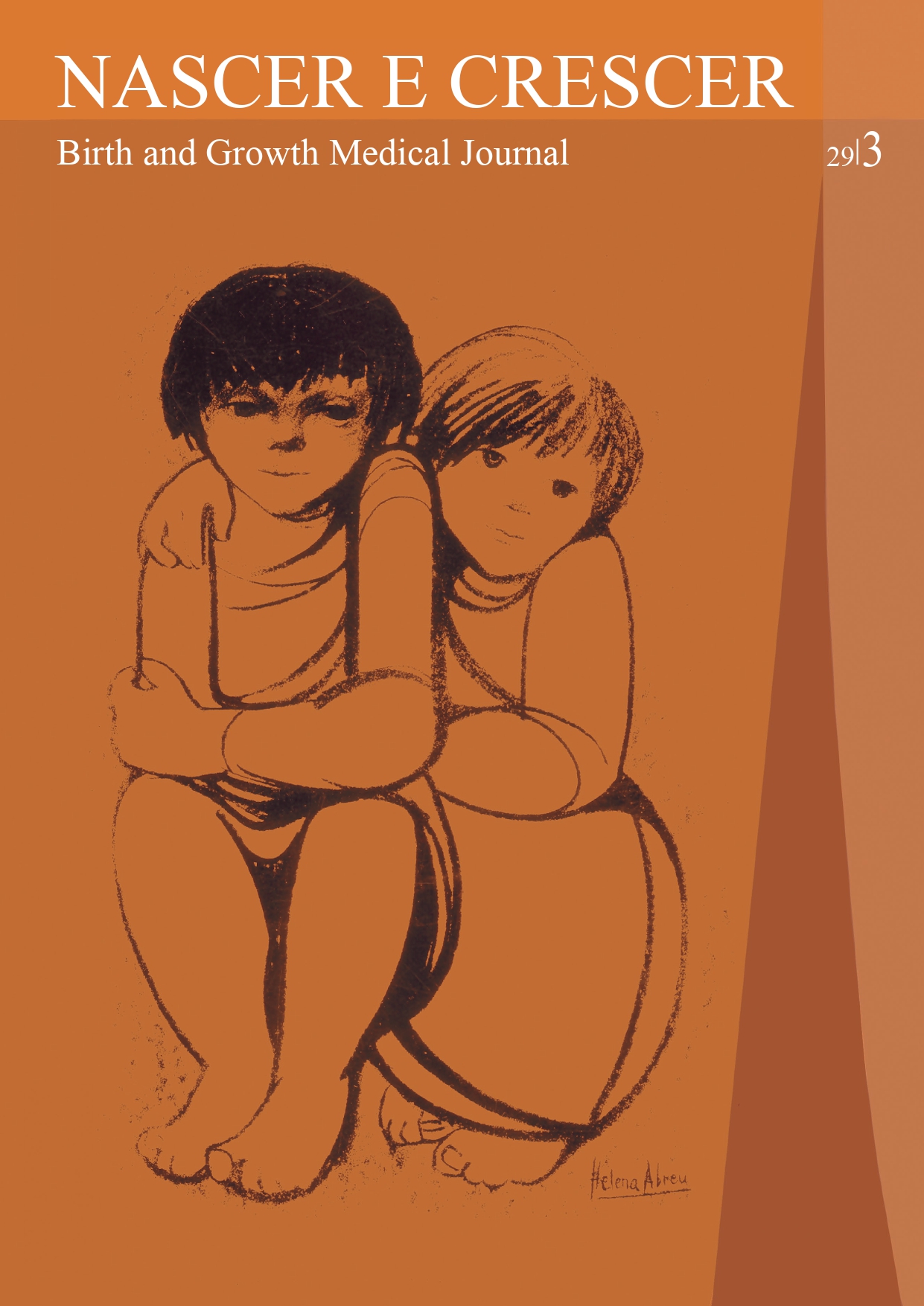Chronic spontaneous urticaria in pediatric age
DOI:
https://doi.org/10.25753/BirthGrowthMJ.v29.i3.17002Keywords:
autoimmune urticaria, child, chronic spontaneous urticaria, diagnostic investigationAbstract
Introduction: Chronic spontaneous urticaria is characterized by emergence of pruritic maculopapular cutaneous lesions recurring for more than six weeks, without known triggering factor. Association with autoimmunity is sometimes present, with urticaria preceding the onset of autoimmune disease.
Clinical case: A five-year-old female with a personal history of allergic asthma and family history of thyroid disease was referred to the Immunoallergology consultation for cutaneous complaints compatible with urticaria with more than three years of evolution. Inducible urticaria forms were excluded. Analytical study revealed positive antinuclear antibodies with a 1/320 titer and positive basophil activation test after stimulation with autologous serum. Control of cutaneous manifestations was achieved with full dose antihistaminic H1.
Conclusion: Chronic spontaneous urticaria associated with autoimmunity is rare in children. Clinical follow-up should be maintained to evaluate disease control and enable early recognition of other autoimmunity manifestations.
Downloads
References
Zuberbier T, Aberer W, Asero R, Bindslev-Jensen C, Brzoza Z, Canonica GW, et al. The EAACI/GA2LEN/EDF/WAO Guideline for the Definition, Classification, Diagnosis and Management of Urticaria. Allergy. 2018; 73:1393-414.
Costa C, Gonçalo M. Abordagem diagnóstica e terapêutica da urticária crónica espontânea: recomendações em Portugal. Acta Med Port. 2016; 29:763-81.
Brüske I, Standl M, Weidinger S, Klümper C, Hoffmann B, Schaaf B, et al. Epidemiology of urticaria in infants and young children in Germany–results from German LISAplus and GINIplus Birth Cohort Studies. Pediatr Allergy Immunol. 2014; 25:36-42.
Sahiner UM, Civelek E, Tuncer A, Tolga Yavuz S, Karabulut E, Sackesen C, et al. Chronic urticaria: etiology and natural course in children. Int Arch Allergy Immunol. 2011; 156:224-30.
Yilmaz E, Karaatmaca B, Cetinkaya P, Soyer O, Bulent E, Sahiner U. The persistence of chronic spontaneous urticaria in childhood is associated with the urticaria activity score. Allergy Asthma. 2017; 38:136-48.
Netchiporouk E, Sasseville D, Moreau L, Habel Y, Rahme E, Ben-Shoshan M. Evaluating Comorbidities, Natural History, and Predictors of Early Resolution in a Cohort of Children With Chronic Urticaria. Jama Dermatol. 2017; 153:1236-42.
Eser I , Yologlu N, Baydemir C, Aydogan M. The predictive factors for remission of chronic spontaneous urticaria in childhood: Outcome from a prospective study. Allergol Immunopathol. 2016; 44:537-41.
Konstantinou GN, Asero R, Ferrer M, Knol EF, Maurer M, Raap U, et al. EAACI taskforce position paper: evidence for autoimmune urticaria and proposal for defining diagnostic criteria. Allergy. 2013; 68:27–36.
Dalal I, Levine A, Somekh E, Mizrahi A, Hanukoglu A. Chronic urticaria in children: Expanding the “autoimmune kaleidoscope.” Pediatrics. 2000; 106:1139–41.
Confino-Cohen R, Chodick G, Shalev V, Leshno M, Kimhi O, Goldberg A. Chronic urticaria and autoimmunity: associations found in a large population study. J Allergy Clin Immunol. 2012; 129:1307–13.
Szegedi A, Irinyi B, Gal M, Knol EF, Maurer M, Raap U, et al. Significant correlation between the CD63 assay and the histamine release assay in chronic urticaria. Br J Dermatol. 2006; 155:67–75.
Gyimesi E, Sipko S, Danko K, Kiss E, Hídvégi B, Gál M, et al. Basophil CD63 expression assay on highly sensitized atopic donor leucocytes-a useful method in chronic autoimmune urticaria. Br J Dermatol. 2004; 151: 388 –96.
Fortina AB, Fontana E. Update on antihistamine treatment for chronic urticaria in children. Curr Treat Opt Allergy. 2014; 1:287-98.
Boguniewicz M. The autoimmune nature of chronic urticarial. Allergy Asthma Proc. 2008; 29:433–8.
Downloads
Published
How to Cite
Issue
Section
License
Copyright and Authors' Rights
All articles published in Nascer e Crescer - Birth and Growth Medical Journal are Open Access and comply with the requirements of funding agencies or academic institutions. For use by third parties, Nascer e Crescer - Birth and Growth Medical Journal adheres to the terms of the Creative Commons License "Attribution - Non-Commercial Use (CC-BY-NC)".
It is the author's responsibility to obtain permission to reproduce figures, tables, etc. from other publications.
Authors must submit a Conflict of Interest statement and an Authorship Form with the submission of the article. An e-mail will be sent to the corresponding author confirming receipt of the manuscript.
Authors are permitted to make their articles available in repositories at their home institutions, provided that they always indicate where the articles were published and adhere to the terms of the Creative Commons license.


